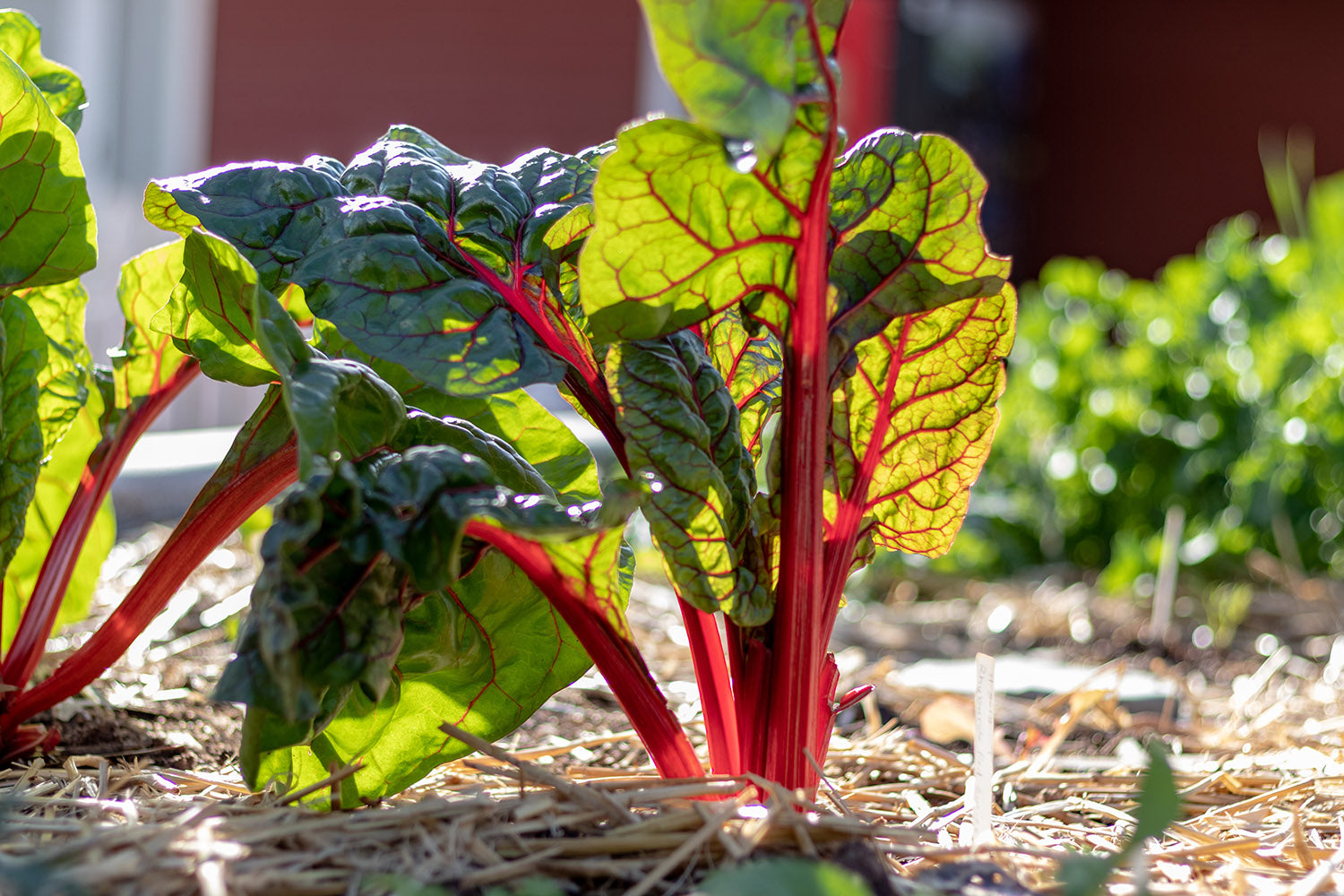Artichoke
Good in dips, good in your garden.
Collapsible content

WHEN TO PLANT
Artichoke starts will produce edible buds the first year they are grown and are often grown as an annual. But, in the PNW, with a little extra care, they can be grown as a perennial. Artichokes prefer loose, well-amended soil that drains easily. Plant them in full sun 3 to 5 feet apart. They become large plant, typically reaching 3-4′ tall. Water them regularly for best performance. To help them over winter, they should be cut back and heavily mulched in the fall.
HARVEST
By midsummer artichokes will send up a flower bud, this is the edible portion of the plant. Once the bud is full and dark green, or purplish (depending on the variety), and before it starts to open, it should be harvested. If all buds are harvested, and the season is mild, they can produce a second fall crop.
Asparagus
These taste amazing with bacon.
Collapsible content

PLANTING
Start preparing for your asparagus in the fall. Start by digging out a 12-24”-wide by 18” deep trench. Asparagus crowns should be planted about 18″ apart, so keep that in mind when determining the length of the row. Rows should be 2′ apart. Neatly pile the soils beside the trench and blend in a couple inches of compost and refill the trench.
Crowns are typically available in late winter/early spring at the nursery. Plant in early spring, after the last frost, but before the crowns start to germinate. The roots naturally grow in a fan shape with the crown at the center. Spread them back out in that pattern in the bottom of the trench and cover with soil. Space the crowns about 5 inches below the surface. Never let crown root tips touch each other when planting. Plant crowns 2′ apart. Keep the bed well weeded and well watered.
HARVEST
Let the crowns develop for one year without any harvesting, this ensures the plant is putting its energy into root growth, which will mean a healthier plant, and more to harvest in the future. On the second year it is okay to harvest sparingly, only spears thicker than a pencil and only for about a week. On the third year you can increase your harvest window to two weeks. By the fourth year you can start regular harvest off all the spears for a six week period.
It is important to let spears go to maturity and leaf out so they can collect nutrients to supply the roots to maintain vigor for years to come.
Horseradish
Do you like these on hot dogs?
Collapsible content

PLANTING
As with most root vegetables, horseradish prefers loose, well draining soil, packed with organic matter. Create 12-24″ wide by 12″ deep rows. Space rows 36″ apart. Plant roots in early spring diagonally in the ground with the slanted end down and flat end on top.
HARVEST
In the late fall/winter, after the frost has killed the leaves, through early spring the roots can be dug up with a pitch fork. Gently loosen the soil and harvest the roots, leaving any of pencil thickness to be replanted for next years harvest.
Rhubarb
Surprisingly delicious in desserts!
Collapsible content

PLANTING
To get started, dig a trench about 3 feet wide and 8 inches deep. The bed will be in place for 5 years without being tilled or worked, so place it in a practical space and don’t skimp on organic material. Put about 4 inches of well-rotted manure or well-aged compost into the bottom of the trench and cover it with several inches of soil. Then, with a shovel, lever open a deep slit and set the crows in a zigzag pattern about 24 inches apart. Gently compress the soil around the root and water well.
WATER
Keep the bed well-watered for the first summer. Then, mulch the bed with compost or well-aged manure once a year in early spring, and keep it weeded.
HARVEST
Do not harvest the first the first year. Your plant needs time to establish itself. Instead, wait and then you can harvest as soon as the leaves first appear, and continue until the stalks get too tough and stringy. But, do not take more than half the stalks that come up or you’ll drain the root’s food reserves.
